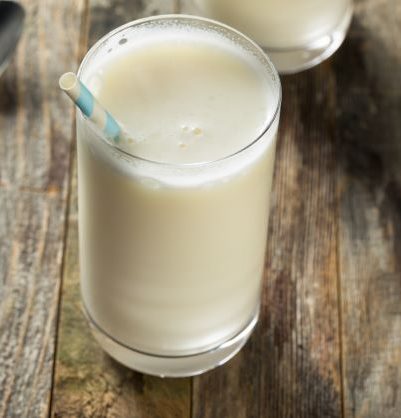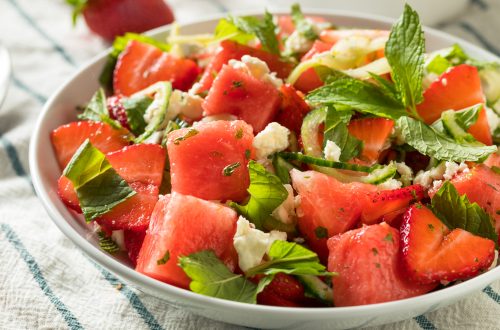
Egg Creams, Black Cows, and Other Local Whistle Whetters
Have you ever traveled to a different part of the world and come across an unfamiliar drink, especially one that the locals have given an unusual name? Maybe that’s what caught your eye. That’s what happened when I asked for a dessert menu in a restaurant in New York City last week. I spied “egg cream.” Curious, I asked for one. Turns out that this frothy, spritzy concoction (such as the one pictured above) contains neither egg nor cream; just milk, either chocolate or vanilla syrup, and seltzer. I ordered the vanilla version, and it was flavorful and refreshing.
It seems that recipes for the drink vary, with different methods of getting the proper two-thirds liquid, one-third froth. While the origins are lost to time, the drink likely originated among Yiddish-speaking Eastern European immigrants in the late 1800s, consisting of chocolate syrup, cream, and raw eggs mixed into soda water. Those who could not afford the extravagance created a version without the eggs and cream. Another explanation comes from reports that a famous Yiddish actor, having tasted a chocolat et crème on a trip to Paris, tried requesting it in New York. His heavy accent perhaps sounded something like “egg cream.”
My first experience of an egg cream brought to mind another regional favorite. On a recent visit to Illinois, my mother reminded us of a drink we loved as kids, the black cow. We got ours at the local A&W Root Beer stand. This simple standout served in a mug consisted of a couple of scoops of vanilla ice cream topped with cold root beer. It’s believed to have originated in the Rocky Mountains of Colorado where Frank Wisner, the owner of Cripple Creek Brewing, was inspired by the snow atop Cow Mountain. He put some ice cream in a mug and added his children’s favorite root beer. When he served it in his brewery as a Black Cow Mountain drink, his customers shortened the moniker to “Black Cow.” The popularity spread at least as far east as Illinois. (Editor’s note: you might well remember the Steely Dan song that further immortalized it.)
Iconic thirst quenchers from New England to Hawaii
I decided to investigate what others are drinking further afield. It seems we Americans have a host of local concoctions. Detroit has its Boston Coolers, New Mexico has green chile lemonade, Palm Springs has date shakes, and Hawaii has the POG. Some drinks seem to rise and fall in popularity just as fashions wax and wane. Though I’ve lived in New England for more than 50 years, I’ve never encountered switchel, a Colonial-era drink that has dropped into obscurity. Historians say that early New Englanders enjoyed this beverage made of apple cider vinegar, ginger, water, and a sweetener like molasses or maple syrup.
Detroit’s Boston Coolers are made with softened vanilla ice cream and Michigan’s beloved Vernor’s Ginger Ale, blended thick like a milkshake. How did it get its name? Again, theories abound, but it’s possible that the drink originated in Detroit’s Boston Edison neighborhood, or perhaps was named after Boston Boulevard. In any case, it has nothing to do with Boston, but it’s been an iconic local confection for decades.
Some local drinks just grew out of necessity. New Orleans’ chicory coffee is traced to the Civil War and the Union naval blockade of the port. Once the second-largest importer of coffee, New Orleans had to improvise, and its residents used ground chicory root as a substitute. But the switch apparently caught on, and you can find chicory coffee served to this day.
Shaking things up
Other drinks take advantage of the abundance of local ingredients, like the Palm Springs’ date shake, which is merely a milkshake blended with the fruit of date palms. Hawaii’s POG is simply a combination of equal parts passion fruit, orange, and guava fruit juices. It was created by a consultant at a dairy on Maui. And its flat cardboard bottle caps became the inspiration for the popular 1990s game POG.
Then there’s Ironport, sometimes referred to as Iron Port. It’s a carbonated soft drink described as a very sweet cross between root beer and Caribbean spices. Some say it’s similar to the Cuban soda Iron Beer. Others describe it as a black-cherry Dr. Pepper. These days, it can still be found in soda fountains in the western states, especially among the Mormon population – something to look for should you ever get thirsty while trekking in the Wasatch Mountains.
I’m planning to sample as many of these beverages as I can in my travels and look forward to scouting out other local drinks in the future. How about you? Any regional liquid concoctions that you’ve come upon? Please share.
To comment, please click on “Read in Browser” or on the headline to view the blog on the website. You can log in and comment at the end of the blog to share your thoughts and start a discussion.
If you’d like to share the blog, click on the Facebook icon or one of the others. Thanks!




